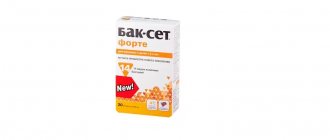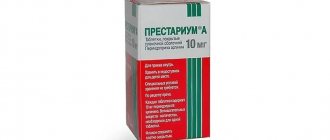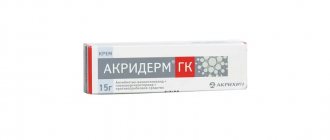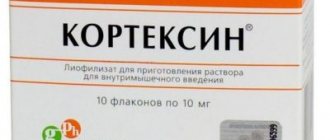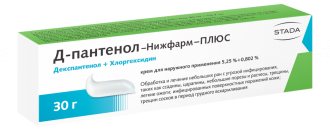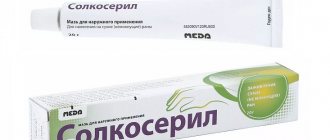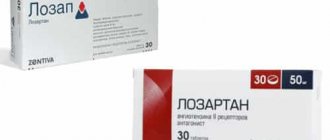Updated: 04/23/2021 15:13:42
Expert: Abramova Tsilya
Fungal infections of the skin and nails occur at any age. Not a single person on the planet - from one-year-old babies to respectable pensioners - is protected from the development of the disease. More often, the fungus occurs in people with reduced immunity - against the background of chronic somatic or infectious pathology. But even a completely healthy person can pick up a fungal infection in public places. It is enough to walk barefoot on the tiles of a swimming pool or sauna to get an illness that is unpleasant and difficult to cure.
Sometimes the human body copes with the problem on its own, and the immune system destroys the fungus. But if the immune system is undermined by a cold, stress, or hard work, the fungal infection remains. The process develops gradually and over a long period of time, affecting the skin and nails. The lower extremities are most often affected; less often, the lesion is detected on the arms or body.
In the treatment of local fungal infections, local remedies are used - creams, ointments, gels and nail polishes. In this article we will look at two well-known representatives of antimycotics - Loceril and Oflomil. These are analogues - they contain the same active ingredient, have similar indications and contraindications for use. The drugs differ only in price - the original Loceryl costs almost twice as much as the generic Oflomil. Let's figure out which product works better.
Pharmacodynamics and pharmacokinetics
Pharmacodynamics
Loceryl is an antifungal external drug. The drug exhibits fungicidal and fungistatic effects, which are caused by the destruction of the cytoplasmic membrane of the fungal cell by blocking the synthesis of sterols . of ergosterol decreases , atypical non-planar sterols . Has a wide spectrum of action.
Inhibits both common and rare types of fungi that cause nail lesions:
- yeast fungi of the genera Malassezia (Pityrosporum), Candida, Cryptococcus;
- dermatophytes of the genera Microsporum, Trichophyton, Epidermophyton;
- fungi of the genera Fonsecaea, Cladopsorium, Wangiella (family Dematiaceae);
- molds of the genera Scopulariopsis, Alternaria, Hendersonula;
- dimorphic fungi of the genera Coccidioides, Histoplasma, Sporothrix.
Pharmacokinetics
After application to the nail plate, it penetrates into the nail bed. The therapeutic concentration remains for 10 days even after the first use.
Absorption into the systemic circulation is negligible.
Anti-fungal varnish: how it works
Amorolfine hydrochloride as part of antimycotic drugs works only locally. The varnish is applied to the nail plate affected by the fungus - and there the medicine begins to work. It almost completely penetrates the nail within 24 hours and reaches the nail bed. The required concentration of the active substance remains in the tissues for up to 7-10 days. This allows you to use the drug only once a week.
Amorolfine has a wide spectrum of action. It works against the most common pathogens of fungal nail infections. These are primarily the following microorganisms:
- dermatophytes: microspores and trichophytes;
- yeast fungi: candida, cryptococcus;
- molds: Alternaria, etc.;
- Demacium fungi;
- dimphor mushrooms.
A complete list of potential pathogens will be of interest only to laboratory diagnostic doctors, dermatologists and infectious disease specialists. It is more important for us to know that amorolfine acts against various types of fungi - both those that are common and rare representatives of pathogenic flora. It has both a fungistatic and fungicidal effect - it inhibits the growth of fungi, prevents their further reproduction and destroys mature individuals.
Penetrating into the nail plate, amorolfine passes the cell wall of the fungus. It blocks the synthesis of sterols, which are responsible for the stable structure of the pathogen. Damages the membrane of the fungus, leads to its death and suppresses the further spread of the infectious process.
Our journal's experts compared the instructions for both drugs and found no differences in the mechanism of action. Both agents have a wide spectrum of antifungal activity and act on the same microorganisms. The rate of absorption of the drug and its distribution in the nail plate are also no different.
Instructions for use of Loceryl (Method and dosage)
The instructions for Loceryl indicate that nail polish should be used externally, applying it to nails affected by fungus up to two times a week according to the scheme below:
- Before using the drug, you should, if possible, remove the affected areas of the nail plate using a nail file, which is included in the kit;
- then the surface of the nail plate should be cleaned and degreased with a swab from the kit soaked in alcohol (a similar treatment with a file and swab must be carried out each time before using the medicine);
- the next step is to dip the spatula into the bottle of varnish and remove it without touching the neck of the bottle (it is forbidden to remove excess product on the neck of the bottle);
- Nail polish Loceryl is applied to the affected nail over the entire surface using a spatula, repeating this procedure for each affected nail;
- then close the bottle tightly immediately after use;
- the varnish is allowed to dry (this usually happens within 3 minutes);
- Wipe the spatula with the used tampon, avoiding contact between the nail plates and the tampon, and throw it away;
- Treatment is continued until the affected area is healed and the nail is regenerated.
The average duration of treatment for fingernails is 6 months and for toenails – 1 year.
Anti-fungal varnishes from 1000 rubles
A relatively expensive, but quite effective varnish is Loceryl based on the active ingredient Amorolfine. Copes well with extensive and chronic mycoses caused by any type of infection. The drug is applied twice a week until complete recovery. Side effects include mild burning and itching of the skin. Not recommended for use during pregnancy and lactation. The cost of the drug is from 1300 rubles.
Mycosis on toenails occurs much more often.
One of the most popular remedies against mycosis, judging by numerous reviews, is Lamisil varnish, developed on the basis of a substance such as Terbinafine. The drug is effective against dermatophytes, mold and yeast. Recommended for use in conjunction with tablets and ointments for mycosis. Apply twice a week until complete recovery. Not recommended for use during pregnancy or under 12 years of age. Side effects include mild redness and itching of the skin. Price – from 1300 rubles.
A good anti-inflammatory and preventive agent is a new product - Lorecil varnish, developed on the basis of Amorolfine. The treatment is applied to the nails 1-2 times a week and has special recommendations for use: it should be applied to previously washed and cleaned nails, additionally disinfected with an alcohol solution. However, the varnish takes quite a long time to dry, so after applying it you should wait a few minutes before starting to move. The course of treatment can last from 2-3 months to a year, depending on the intensity of the disease. Contraindications are the same as for other drugs. As for side effects, in addition to mild itching, they may include flaking of the skin. Price - from 1300 rubles.
To avoid fungus, careful hygiene must be observed.
Finally, Batrafen varnish is considered one of the most effective remedies, which fights 58 types of fungus that causes mycosis on the toenails and fingernails. The medicine is developed on the basis of Cyclopirox. It must be applied according to a special scheme: the first month the varnish is applied daily, the second - twice a week, and in the third month - only once a week. The duration of the course usually does not exceed six months. The drug can cause peeling, itching and hives, and is not recommended for pregnant women or children under 12 years of age. The cost of this new cosmetic product starts from 2,200 rubles.
Before using any of the products, you must consult a dermatologist.
special instructions
Files that were used to process diseased nail plates should not be used to manipulate healthy nails.
Persons working with organic solvents should wear impermeable gloves to protect polished nails.
During treatment with the drug, you should avoid using artificial false nail plates and do not use cosmetic varnish.
The tampon contains a highly flammable component.
It is necessary to avoid penetration of varnish into the ears, eyes and mucous membranes.
Persons with conditions predisposing to the appearance of fungal infections of the nail plates ( diabetes mellitus , peripheral circulatory disorders, immunodeficiencies ), as well as persons with or damaged nails or nail dystrophy, should consult a doctor before using the drug.
conclusions
Let's summarize:
- Loceril and Oflomil are antimycotics. They act against fungal nail infections - they destroy the fungus and restore the tissue structure. The spectrum of activity of the drugs is the same.
- Loceryl and Oflomil contain one active ingredient - amorolfine hydrochloride. The concentration of the active component is higher in the original product – Loceryl. Generic Oflomil has a lower content of amorolfine in the same volume of the drug.
- Loceryl has undergone clinical trials and proven its effectiveness in practice. No studies have been conducted for the generic Oflomil. By default, its therapeutic effect is considered similar.
- The regimen is the same for both drugs. They are well tolerated and rarely cause adverse reactions.
- It is difficult to treat fungus; it is easier to prevent it. Follow the rules of personal hygiene: do not wear someone else's shoes, do not walk barefoot on a public beach, sauna or swimming pool. Monitor the condition of your nails and skin of your feet, notice the slightest changes. At the first signs of a fungal infection, consult a doctor.
Loceryl's analogs
Level 4 ATX code matches:
Mikonorm
Undecin
Gentian violet
Zinkundan
Exoderil
Exiter
Batrafen
Lamisil Dermgel
Lamisil Uno
Lamisil
Salicylic acid
Salicylic ointment
Keto Plus
Exifin
Fungoterbin
Mycoseptin
Thermikon
Nitrofungin
Sulsena
Baziron AS
Batrafen (varnish, spray), Oflomil Lac, Amorolac, Mikolak, Bifosin (spray), Demikten (varnish), Terbix (spray), Lamisil (cream, spray), Lamifast (cream), Kanespor (ointment), Fungoterbin (Russian equivalent) in cream form). The price of Loceryl analogues is noticeably lower than the price of the described drug.
Reviews about Lotseril
Reviews of Lotseryl varnish on forums are often replete with a large number of negative reviews of Lotseryl nail fungus varnish. Reviews from doctors also indicate that the drug is often ineffective. The greatest dissatisfaction is caused by cases of complete lack of therapeutic effect at a high price for this varnish against nail fungus.
Varnish Batrafen or Loceryl - which is better?
The difference between Batrofen or Loceryl is that they include different active components, although their mechanisms of action are similar. Both products are produced in the form of a varnish, and both drugs have approximately the same structure of reviews, indicating the absence of a therapeutic effect in approximately half of the cases. The price of Batrafen is approximately 2 times higher than the price of Loceril. The choice should be made based on doctor's prescriptions and economic considerations.
Evidence base: assessing the effectiveness of drugs
Loceryl is a drug that has undergone clinical trials. Many scientific articles in the medical literature are devoted to Amorolfine in its composition. Let's look at the most striking examples of the effectiveness of the drug:
- The medical knowledge base PubMed mainly talks about how the drug works in vitro - in a test tube. Amorolfine has been proven to be effective against most common fungal pathogens, as well as some rare microorganisms.
- In a randomized, double-blind study, two versions of the drug were compared - 2% and 5% lac. It turned out that 5% varnish copes better with its task - it quickly destroys the fungus and relieves the symptoms of the disease.
- In another study, scientists found out how often to apply nail polish - once or twice a week. It turned out that one application of the medicine per week was enough.
- The Cochrane Library has a review comparing various antimycotics. Amorolfine is given close attention in the review. Researchers say the drug treats most known fungal nail infections.
- There are many articles on Lotseril in Russian-language literature. The drug is positioned as a first-line treatment for fungal nail infections. It is noted that it is well tolerated and has a convenient form of application - in the form of a varnish. This makes Loceryl superior to other antimycotics produced as a means for external application.
- No such studies have been conducted for the generic Oflomil. But since the drug is released onto the pharmaceutical market, its therapeutic effect should be comparable to the original.
Lotseril price, where to buy
The price of Lotseryl nail polish 2.5 ml in Russia is 1300-1500 rubles. Buying Loceryl in Moscow or St. Petersburg will cost approximately comparable amounts, falling within the above limits.
How much does it cost to buy the product in other CIS countries?
The price of Loceryl in Ukraine in the specified release form reaches 1,400 hryvnia. In Belarus, in Minsk and other cities, this antifungal varnish is not available for sale at all. The cost of 2.5 ml of nail polish against fungus in a pharmacy in Kazakhstan is 10,500-13,500 tenge.
Analogs of Loceryl in other forms of release (drops, ointment, tablets) are much cheaper and if you are on a limited budget, you should pay attention to them.
- Online pharmacies in RussiaRussia
LuxPharma* special offer
- Loceryl cream cream 20g
RUB 1,290 order
ZdravCity
- Loceryl nail polish 5% 5mlGalderma
1600 rub. order
The difference between antifungal varnishes and other drugs
Antifungal varnishes, unlike other local antimycotics, are able to penetrate deep into the nail plate, destroying the fungus throughout the depth of the keratin layer. That is why, after applying anti-fungal varnish, the destruction of the nail plate stops, and the likelihood of relapse of the disease is minimal.
The effectiveness of medicinal varnish for fungal nail infections:
- The liquid texture of the antifungal varnish facilitates its penetration deep into the nail plate through microcracks on its surface; in the deeper layers of keratin, the drug continues its effect.
- The active substances included in the varnish have a destructive effect on the cell membranes of infectious agents, and also destroy the enzymes of microorganisms that damage the nail plate. Other components - alcohols and oil extracts - dry out the nail plate, which disrupts the habitat habitual for fungi.
- After drying, the varnish forms a thin, moisture-proof film on the nail, which prevents pathogens from penetrating inside and does not allow the passage of air necessary for fungi to reproduce.
To increase the effectiveness of the local drug, it is recommended to use varnish against nail fungus as part of a complex treatment, including systemic antimycotics.
